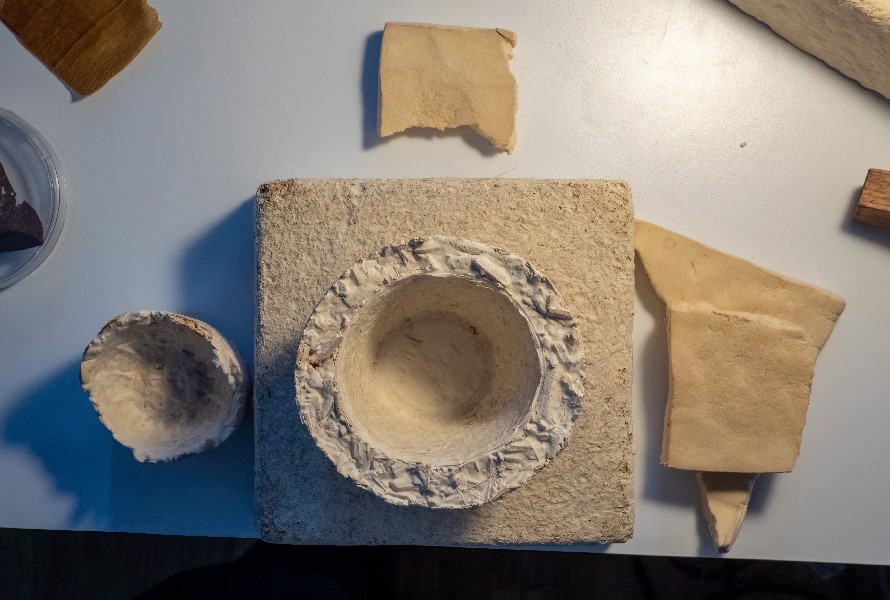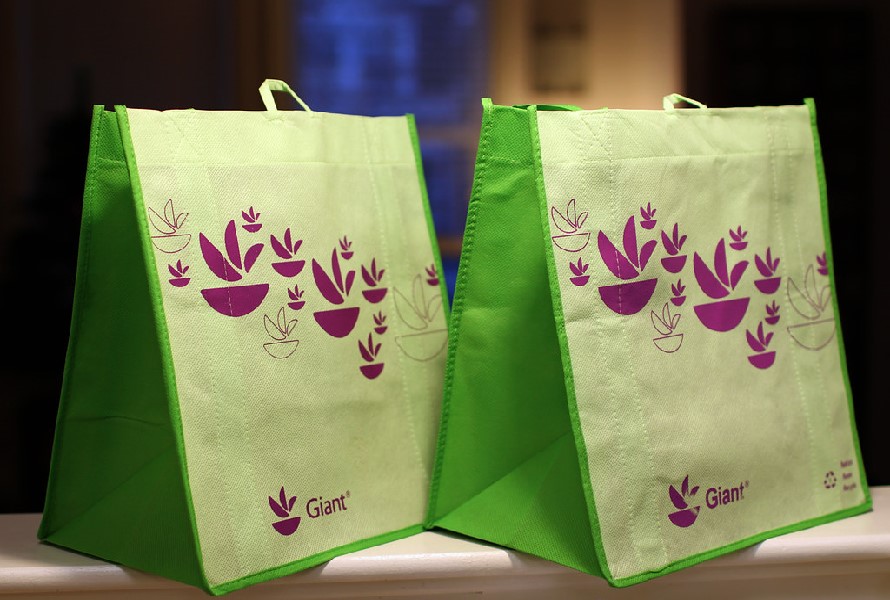Using a biodegradable material to produce sustainable products is becoming popular since more manufacturers and users acknowledge its benefits to the environment. These materials are usually renewable; thus, they produce less waste in landfills and make the environment healthier and safer for wildlife.
This article will explore popular biodegradable material types and their applications. Let's follow up for more!
Read more:
What are bioplastics made from? Materials to make bioplastics
An overview of biodegradable polymer
1. What Is A Biodegradable Material?
A biodegradable material means it can be broken down by natural organisms, such as temperature, UV light, oxygen, and bacteria without causing pollution. These complex substances are turned into simpler organic matter and then finally dissolve and fade into the soil.

This process can be fast or slow, depending on the material. Yet, it reduces the hazards and environmental problems related to biodegradable wastes.
Using a biodegradable material in production not only decreases the burden on landfills but also supports a circular economy. These materials can become a good source for new products.
2. All Types Of Biodegradable Material
There are many types of biodegradable materials. This article will dig into the topic by dividing them into 2 major categories.
2.1. Natural Biodegradable Materials

Bamboo is an ideal biodegradable material alternative to plastic in various items. After harvesting, it regenerates, lowering the requirement for new plantings and enhancing soil health. This environmentally beneficial substitute for plastic is used to make silverware, dinnerware, and utensils.
Cork is obtained from mature trees (the Cork Oak tree barks) without requiring their removal. It is elastic, buoyant, waterproof, and fire-resistant. The material is more environmentally friendly than leather, foam, plastics, and wood. After harvesting, Cork Oak trees absorb more carbon as they regenerate the bark, making it an eco-friendly alternative.
Mycelium is the fibrous root structure of mushroom fungus. People grow it using agricultural by-products and waste materials (hemp hurds, corn stems, etc.). The material grows quickly. After harvesting, it's baked to eliminate fungi and create a flexible, robust, and edible substance. Mycelium is an environmentally friendly option since it's biodegradable and compostable.

Hemp is a fast-growing, multipurpose natural fabric that has been used in textiles for more than 50,000 years. Hemp grows in many types of conditions, doesn't require a lot of pesticides and water, and is ecological and biodegradable. Because of its rapid development, it is a renewable resource that is useful to various sectors.
Read more:
Can hemp replace plastic? Exploring a sustainable alternative
The pros and cons of hemp bioplastic
Natural plant fibers like jute are abundant, reasonably priced, and commonly utilized in Burlap and Hessian products. Jute is ideal for high-quality products like rugs and clothes. The material is resistant to pests and illnesses, biodegradable, and compostable at home. It's a sustainable option because it needs less water, fertilizer, and pesticides. In terms of cost-effectiveness and production, jute is only surpassed by cotton.
Natural plant-based material, untreated wood, is biodegradable and lowers atmospheric carbon. Commercially planted trees are a renewable resource, but wood is a better option since it has less of an impact on the environment.
Read more: How to make plastic look like wood?

Areca palm leaves are a biodegradable material used for bowls, plates, and cups. Because they are manufactured from naturally fallen leaves, these items help to preserve forests by removing the need to chop down trees. They come from other farming endeavors and may be composted at home since they are completely biodegradable.
2.2. Synthetic Biodegradable Materials

- Aliphatic polyesters bioplastics
Aliphatic polyester bioplastics include polyhydroxyalkanoates (PHA), poly-3-hydroxybutyrate (PHB), poly-hydroxy-hexanoate (PHH), and poly-hydroxy-valerate (PHV). Though the material is brittle, it can be reinforced by mixing with additional polymers.
PHA is one of the natural materials produced from renewable resources, such as vegetable oils and sugars. It's biodegradable, compostable, and easy to tailor to meet specific requirements.
PHB is made from microorganisms that break down glucose, maize starch, or wastewater. It's increasingly popular in South America. The material is transparent and resistant to degradation.
- Polylactic acid (PLA) bioplastics
Plant sugars such as corn starch or sugar cane turn into PLA after going through the fermented process. The material is popular for packaging applications since it's biodegradable, compostable, and versatile.
Read more: Applications Of PLA Plastic In Human Life
Starch-based bioplastics are a popular biodegradable material. About half of the market is made up of starch plastics, which are the most prevalent type of bioplastic. Starch-based bioplastics offer the following benefits:
- Availability
- Renewability
- Biodegradability
- Compostability
- Cost efficiency
- Safe for food contact
Read more: Potato starch bioplastic pros and cons
- Cellulose-based bioplastics
Cellulose acetate, nitrocellulose, and cellulose esters—found in plant materials, including forestry waste and agricultural by-products—are the fundamental components used to make cellulose polymers. Researchers are attempting to extract cellulose from model feedstock, leaves, stalks, tassels, and husks.
The material has many advantages, including:
- Lightweight
- Strong
- Good temperature resistance
- Renewability
- Biodegradability
- Compostability
- Lower carbon footprint
- Versatility
- Transparency
- Non-toxic
3. Applications of Biodegradable Materials
Biodegradable materials are widely used in various industries. We can find their applications in:
It's the first and foremost application people can think of when talking about biodegradable materials. Since human well-being is the most concerning matter, using products from harmless materials is a priority.
Manufacturers produce food packaging (containers, bags, and wraps) from a biodegradable material, so it will not harm users and help reduce waste in landfills.
Besides, these materials are also used for product wrapping, such as biodegradable films and wraps for consumer goods.

Biodegradable materials are ideal for medical devices, such as implants and sutures. They are also utilized in sanitary products like pads and diapers since the materials can quickly decompose.
Cleaning products, such as biodegradable detergents and soaps, are produced and encouraged to use as the substances are harmless to humans and can break down into non-toxic components.
Some building materials, such as structural components or insulations, can be made from a biodegradable material.
Plant pots and mulch films that break down naturally in the soil can promote plant development and lessen the need for removal and disposal.
Nowadays, it's more common to see biodegradable cups, plates, and other utensils made from sugarcane fibers or PLA. The textile industry is also experiencing a trend of producing fabrics and clothing from natural fibers or synthetic biodegradable polymers.

4. Conclusion
More and more people are aware of the environmental impacts of plastic materials. A manufacturer needs a biodegradable material to adapt to a new consumption trend and contribute to sustainable development.
Review our list above and choose a suitable material for your business to make a switch today and create more value.
5. About EuroPlas' BioNext and BioMates
If you care about the environment and want to stay ahead of the competition, consider picking a biodegradable material from EuroPlas. We offer:

Our BioNext bioplastic compounds are made from renewable sources, such as polylactic acid (PLA), polyhydroxyalkanoate (PHA), plants, or fossil fuels like aliphatic-aromatic copolyester (PBAT). The biodegradability of these biocompounds is advantageous since, in less than a year, they can break down into biomass, CO2 gas, and water.
The exceptional mechanical qualities of BiONext biodegradable plastic granules include high hardness, good elongation, superior impact strength, glossy surface, and ease of machining. They are extensively utilized in many different industries, including shopping bags, food containers, food wraps, and packaging.

BioMates is a combination of bioplastic, modified CaCO3 powder, and dispersion aids. It is an affordable way to process bioplastic products, cutting expenses in the process and enhancing qualities like gloss and film hardness.
To meet the needs of different applications, EuP has created three distinct biofiller product lines: BiOMates 01, BiOMates 02, and BiOMates 3. BiOMates are appropriate for making single-use plastic extrusion items, injection molding, and biodegradable packaging.
Contact us for more information!